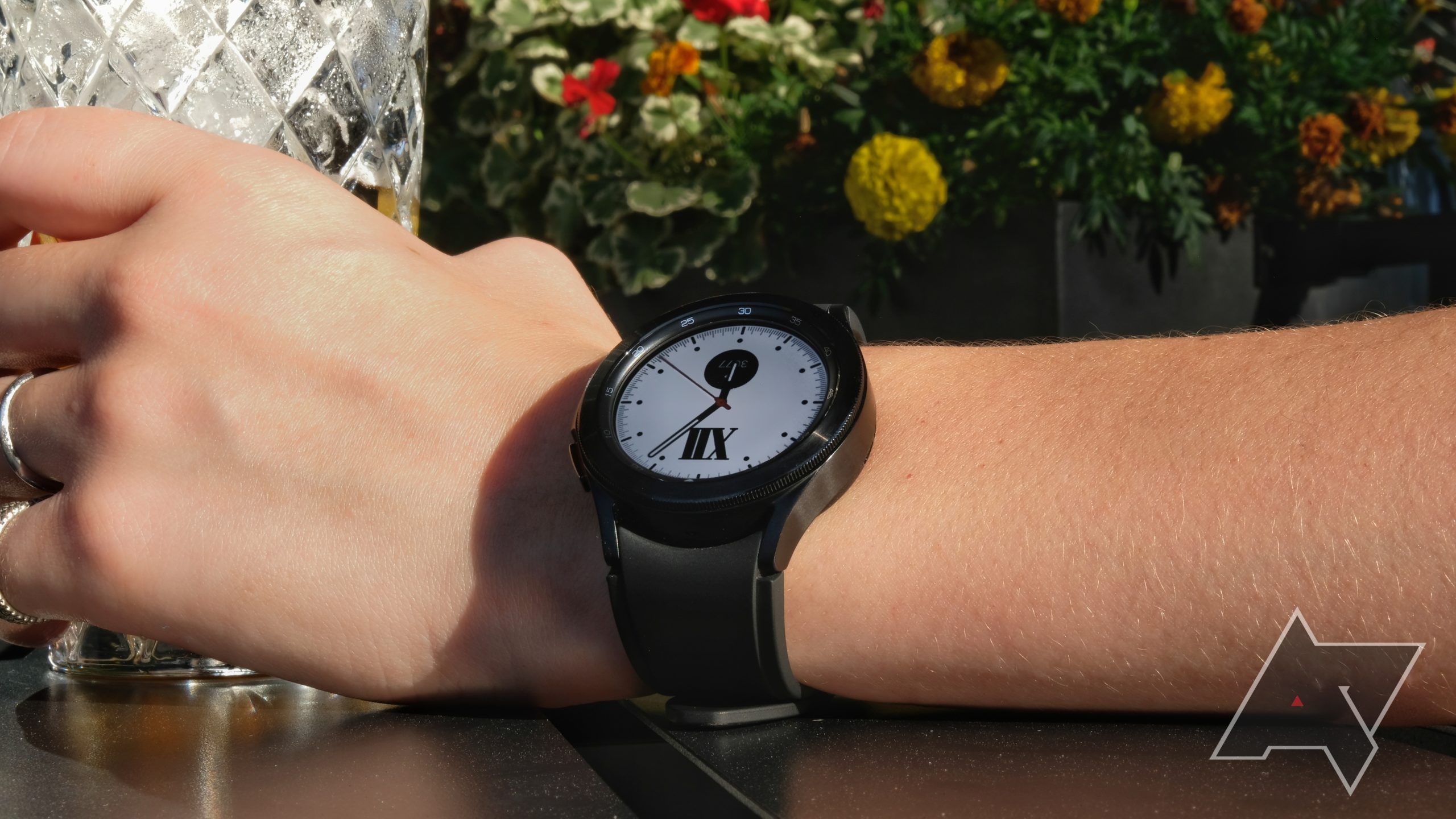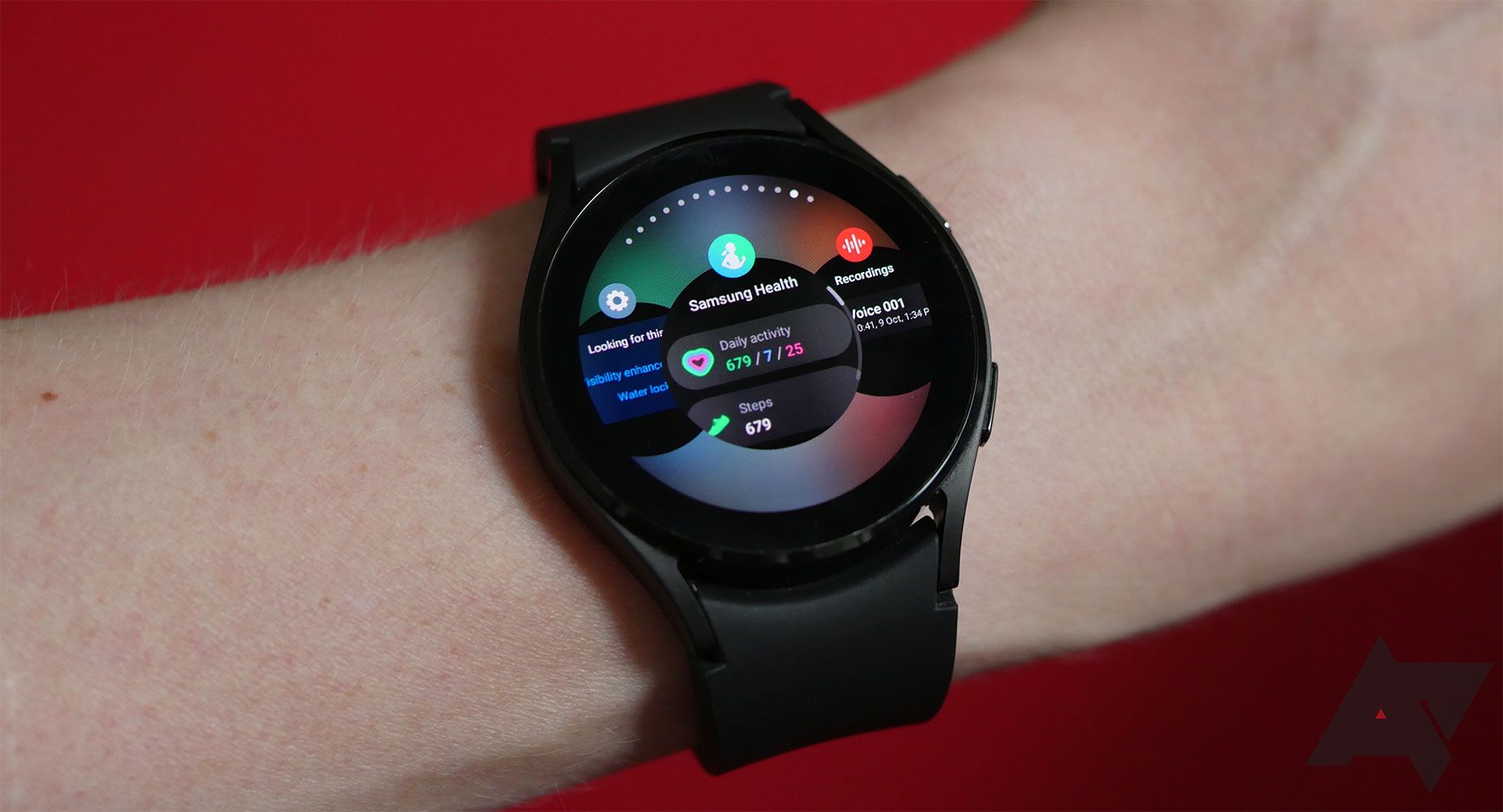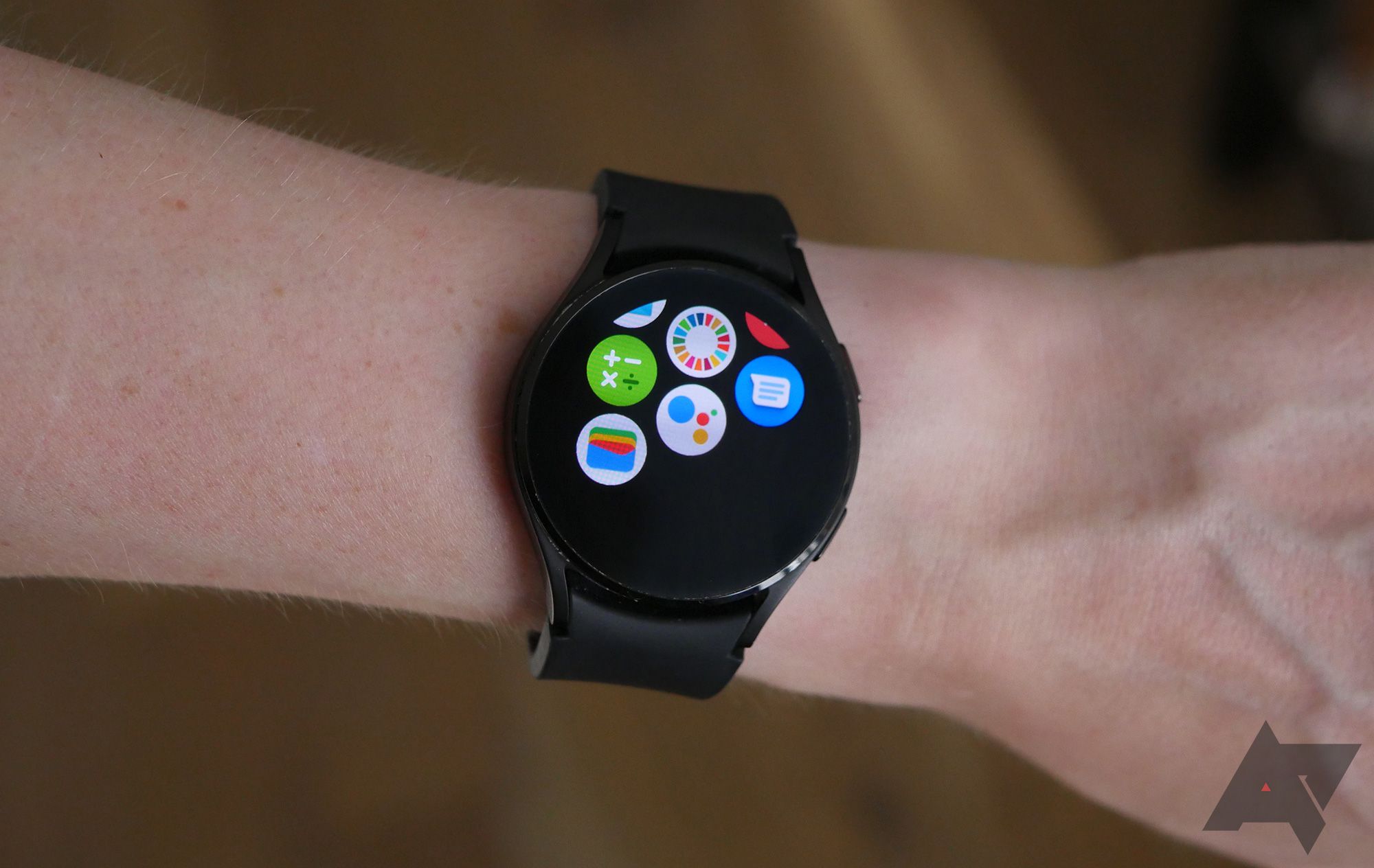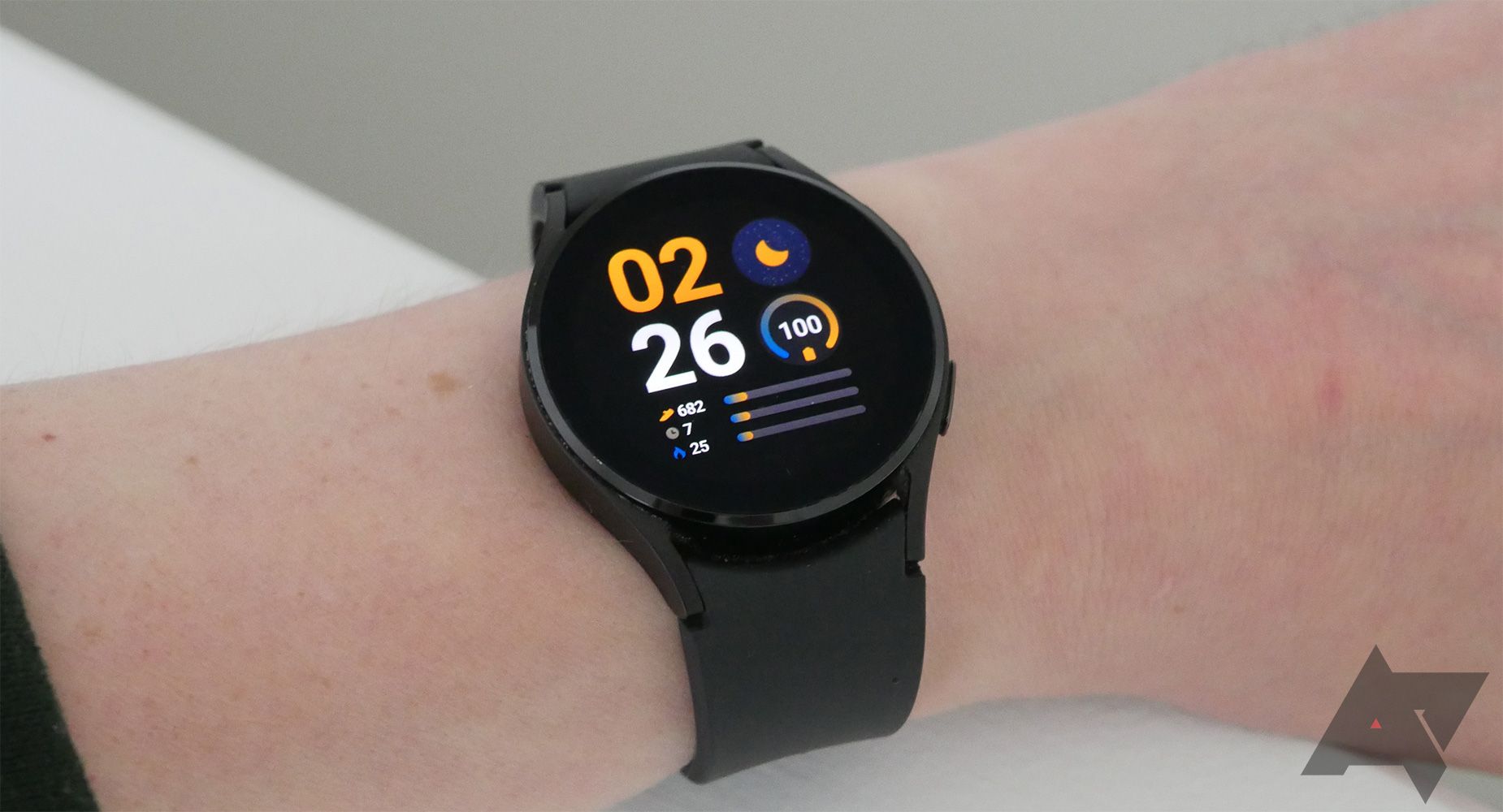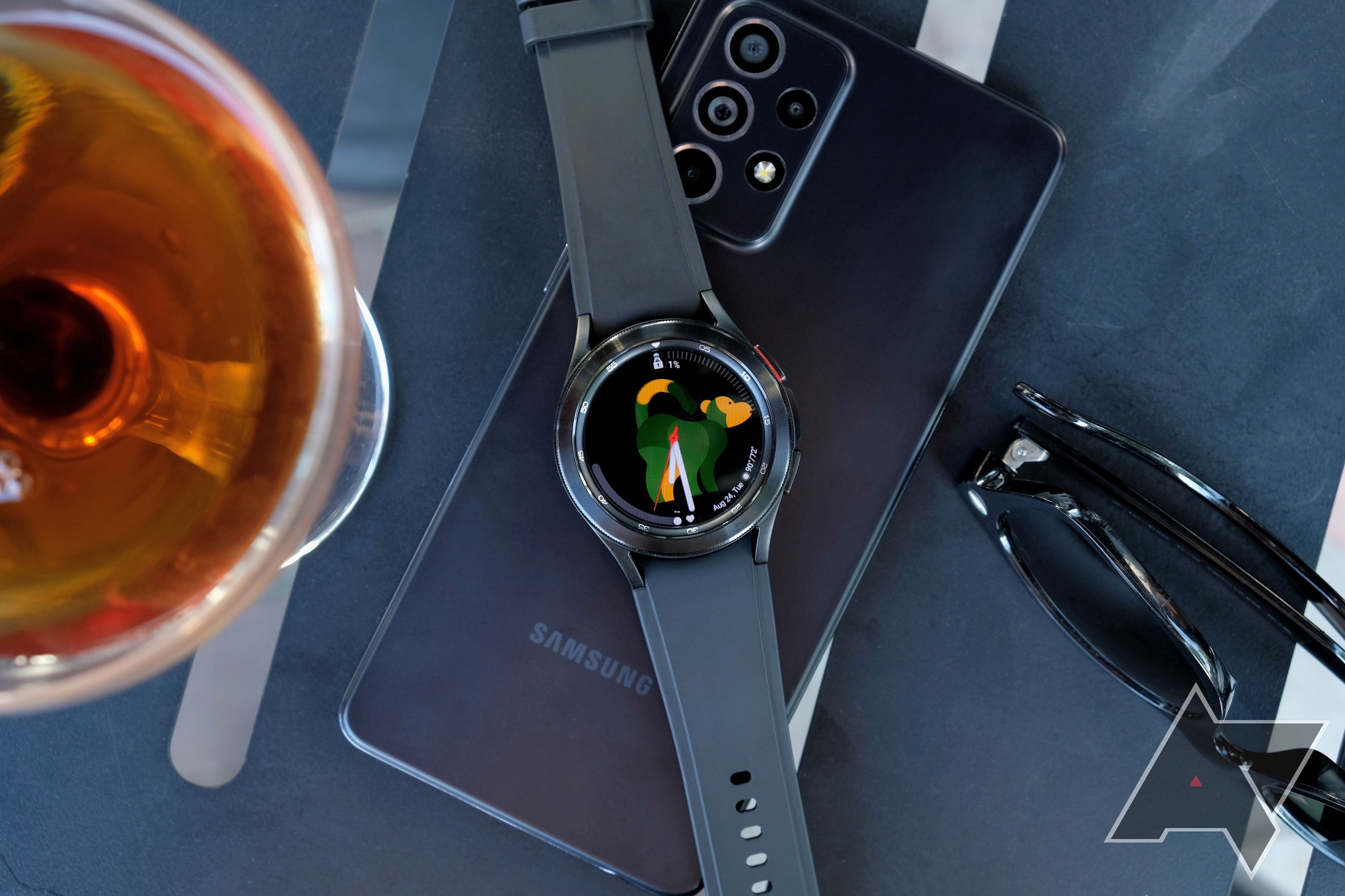-
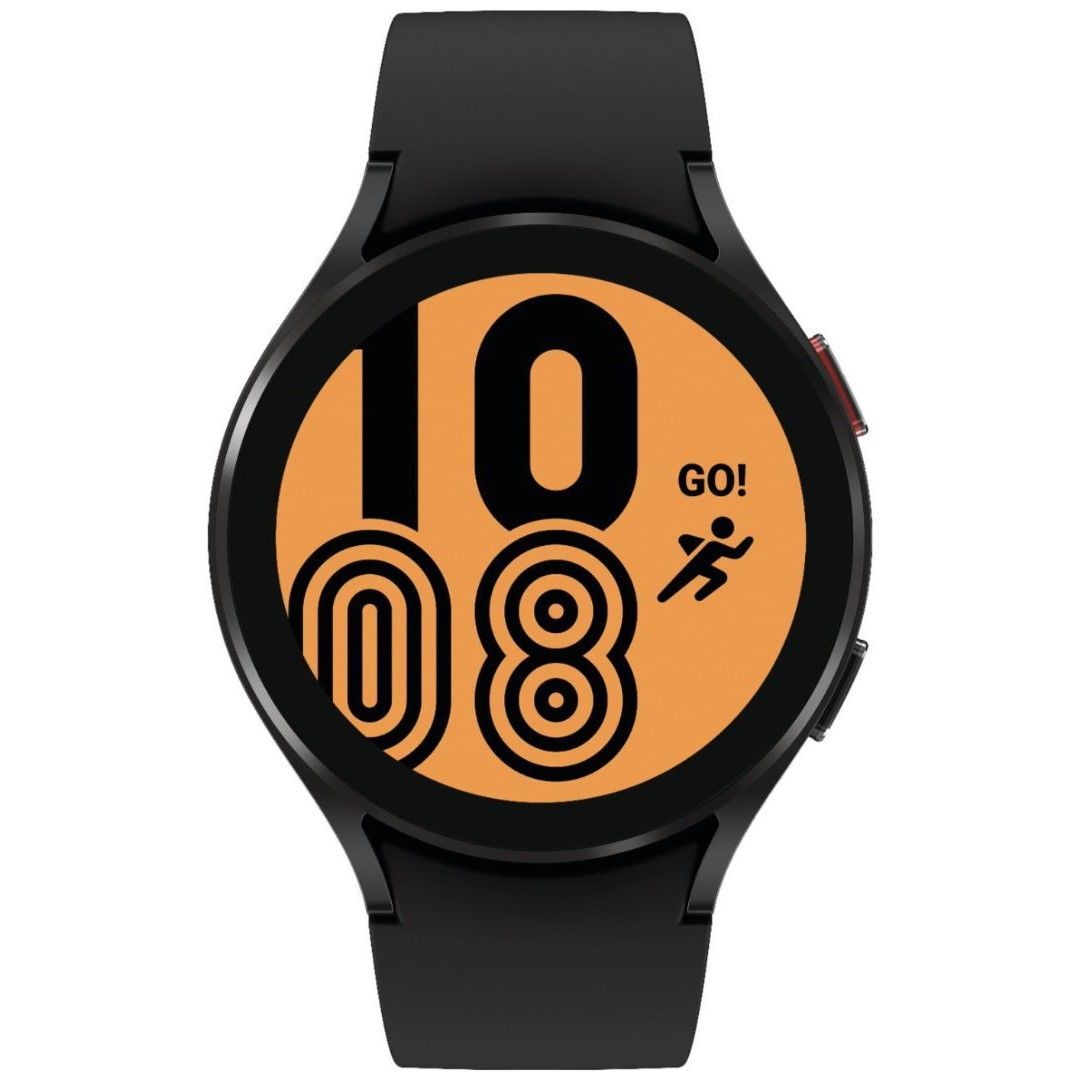
Samsung Galaxy Watch 4
Budget Galaxy Watch$150 $250 Save $100Regularly available for $200 or less, the Samsung Galaxy Watch 4 is the cheapest entry point into Samsung's wearable world. Offering a similar experience to the newer Galaxy Watch 5 and 6 for a lower price, it's still an option for anybody in the market for a new Wear OS watch.
Pros- Often on sale for low prices
- Sleek, simple design
- Good color selection
Cons- No rotating bezel
-
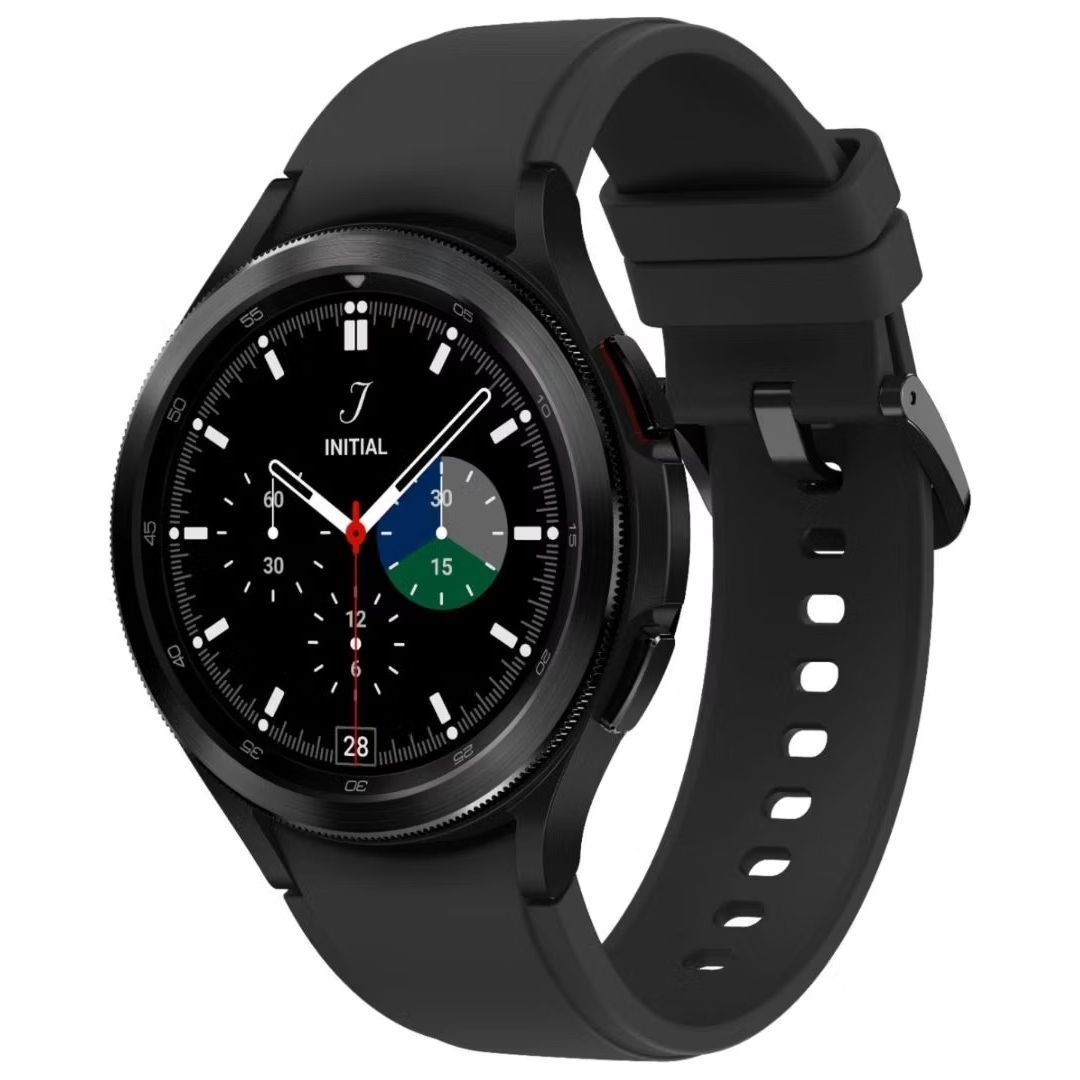
Samsung Galaxy Watch 4 Classic
Bargain bezel$200 $400 Save $200The Samsung Galaxy Watch 4 Classic features the rotating bezel fans prize — a feature entirely missing from the Watch 5 series, though back in the newer Watch 6 Classic. Beyond that, its more conventionally watch-like design offers a little more protection against display damage. It's getting harder to find lately, though.
Pros- Clicky rotating bezel
- More traditional look
- Design better protects the display
Cons- Pricier than the base Watch 4
- Fewer colors to choose from
- Getting harder to find
Summary
- The Samsung Galaxy Watch 4 and Galaxy Watch 4 Classic have almost identical features and functions, with only slight differences in speed and battery life.
- Both watches can be found at significantly lower prices than their original launch prices, with the Galaxy Watch 4 priced around $140 and the Galaxy Watch 4 Classic priced around $180.
- The biggest differences between the two watches are in their materials and design, with the Galaxy Watch 4 having an aluminum case and a more athletic look, while the Galaxy Watch 4 Classic has a stainless steel case and a physical rotating bezel.
The Samsung Galaxy Watch 6 and Galaxy Watch 6 Classic may be the latest and greatest Galaxy smartwatches, but beyond some small hardware upgrades, the core functions and features of the newest and oldest Wear OS-powered Galaxy Watches are nearly identical. The newer watches are a little faster and last a little longer — okay, a fair amount longer — but they have 85% of the same features. Only now, the Samsung Galaxy Watch 4 and Watch 4 Classic can frequently be found for half the price or less.
While it may not be the newest, the Galaxy Watch 4 still earns its place among the best Android smartwatches you can buy today, but how do you choose between the regular Watch 4 and the spiffier, spinning bezel on the Galaxy Watch 4 Classic? Especially when, on any given day, either one can have a lower price with that day's deals, it can be tough to decide which one will fit your wrist, your lifestyle, and your wallet.
But that's why we're here! We can help you finally pull the trigger on what is likely your first Android smartwatch — and as far as introductory wearables go, the Galaxy Watch 4 and the Watch 4 Classic are both great starter watches.
Price, availability, and specs
It may surprise you to learn that the Watch 4 and Watch 4 Classic are both still available brand new from many retailers, including Samsung itself. Samsung is only offering the LTE version of the 4 Classic and both the BT/Wi-Fi and LTE models of the normal Galaxy Watch 4, while Amazon and Best Buy both have all models available in dwindling numbers.
Samsung launched the Galaxy Watch 4 at $250 and the Galaxy Watch 4 Classic at $350 back in 2021, but you shouldn't pay anywhere near those prices now that we're in 2024. The "normal" prices for these two models gravitate between $150 and $200, but you probably shouldn't pay more than $140 for the Galaxy Watch 4 or $180 for the Galaxy Watch 4 Classic.
That said, you can find these watches for closer to $100 if you're willing to watch for a sale. During the Black Friday 2023 season, we watched the Galaxy Watch 4 Classic sell out at $100 at Walmart multiple times, and the Galaxy Watch 4 dropped to $130 at multiple retailers. There are deals for refurbished Watch 4s that go under $100, but I'd recommend those as a "I'm just trying out a smartwatch, and if I like it, I'll trade it towards the new one" scenario. Even a refurbished Galaxy Watch 4 Classic in good condition can get a better trade-in value at Samsung than you likely paid for the watch at most times, especially if you trade it towards the Galaxy Watch 6 Classic.
The tech specs are identical for similarly sized watches. This means the 40mm Watch 4 and 42mm Watch 4 Classic have the same specs, as do the 44mm Watch 4 and the 46mm Watch 4 Classic.
-
Samsung Galaxy Watch 4 Samsung Galaxy Watch 4 Classic Display 1.2" Super AMOLED 396x396 (40mm) or 1.4" 450x450 (44mm) 60Hz OLED, 1.2" 396x396 (42mm) or 1.4"450x450 (46mm) CPU Exynos W920 Exynos W920 RAM 1.5GB 1.5GB Storage 16GB 16GB Battery 247mAh (40mm) or 361mAh (44mm) 247mAh (42mm) or 361mAh (46mm) Connectivity NFC, GPS, Bluetooth 5.0, Wi-Fi 802.11 a/b/g/n, LTE (optional) NFC, GPS, Bluetooth 5.0, Wi-Fi 802.11 a/b/g/n, LTE (optional) Software Wear OS 3 Powered by Samsung Wear OS 4/One UI 5 Watch Health sensors Heart Rate, EKG, Bioelectrical Impedance, Built-in GPS Heart rate, EKG, bioelectrical impedance Price From $200 From $350 Weight 25.9g (40mm) or 30.3g (42mm) 46.5g (42mm), 52g (46mm)
Hardware and design
The biggest differences between the two watches primarily come down to materials and aesthetics. The Samsung Galaxy Watch 4's case is made of aluminum, and it gets two exclusive color options that might make Classic owners jealous: pink for the 40 mm and green for the 44. In addition, it generally has a more svelte, athletic look (think Samsung's older Galaxy Watch Active models).
Meanwhile, the Samsung Galaxy Watch 4 Classic has a chunkier stainless steel case and the physical rotating bezel that longtime fans love about Samsung wearables. The non-Classic version mimics this functionality with a touch-sensitive bezel; that rotating bezel may also help protect the display, as the non-Classic Watch 4's face is completely flat. It's also worth noting here that none of Samsung's Galaxy Watch 5 models have a similar rotating bezel.
The only differences between the two sizes of each Galaxy Watch 4 variant are the sizes of the display and the battery. The smaller watches have a 1.2-inch OLED display with a resolution of 396x396. The larger models have 1.4-inch 450x450 OLED screens. The smaller watches house 247mAh batteries, while the bigger ones pack significantly beefier 361mAh cells.
Software
Both the Samsung Galaxy Watch 4 and the Samsung Galaxy Watch 4 Classic are now running Wear OS 4, with Samsung's custom, Tizen-inspired One UI Watch 5 interface on top. The software experience on each device is identical; hardware is the only thing that differentiates the two watches. Being Wear OS devices, each one enjoys access to the Play Store to download apps, and Samsung says they'll get software updates for up to four years, which likely means they'll be supported into 2025.
Health and fitness
The Samsung Galaxy Watch 4 and Samsung Galaxy Watch 4 Classic have the same health sensors and track all the same parameters, like activity, heart rate, sleep quantity and quality, and body fat percentage. Either watch can track your exercise, both automatically and manually. Health data is stored in the Samsung Health app.
Again, all the features here are identical between the Watch 4 and the Watch 4 Classic. If you're especially active, you might prefer the larger version of either model — the 44mm Watch 4 or the 46mm Watch 4 Classic — for the bigger battery, but that's really the only consideration here.
Battery life
Battery life is the same across like-size models of the Galaxy Watch 4. The 40mm Galaxy Watch 4 and the 42mm Galaxy Watch 4 Classic each have 247mAh batteries. The 44mm Galaxy Watch 4 and the 46mm Galaxy Watch 4 Classic pack significantly beefier 361mAh cells.
Samsung says all Watch 4 models can last up to 40 hours on a charge. Our reviews found that the smaller versions don't quite make it there. The larger 44- and 46-millimeter models last longer between top-ups, more closely matching Samsung's predictions.
Which Galaxy Watch is right for you?
While the Galaxy Watch 5 and Galaxy Watch 5 Pro continue to be more expensive, the difference in price has shrunk significantly since the release of the Watch 6 and Watch 6 Classic. That said, there's a case to be made that the Watch 4 Classic still holds a great deal of appeal, as it features the physical, rotating bezel that made its much-ballyhooed return to the Watch 6 Classic but can be had for a fraction of the price. Just remember that while it is normally discounted down to $200, it can go much lower with a bit of deal-hunting.

Samsung Galaxy Watch 4 Classic
Bargain bezel
While it may be a few years old now, the Samsung Galaxy Watch 4 Classic retains some appeal, featuring the fan-favorite physical rotating bezel for a fraction of the price of the Watch 6 Classic. If you're in the market for a cheap smartwatch that's still being supported by updates, consider the Watch 4 Classic.
If the Galaxy Watch 4 Classic is just too damn big for your wrist or too expensive — Best Buy has a nasty habit of putting it back to $280 or so — the Galaxy Watch 4 still makes a good smartwatch to try out Wear OS, triage notifications from your wrist, and measure your activity to try and be a bit more healthy this year.

Samsung Galaxy Watch 4
Still a very good smartwatch
The Samsung Galaxy Watch 4 remains an excellent smartwatch, especially considering that software/update support is scheduled to continue through at least 2025. That said, given how close in price it is to the Watch 4 Classic (much less the Watch 5), it's become harder to recommend since the release of the Watch 6 series.

